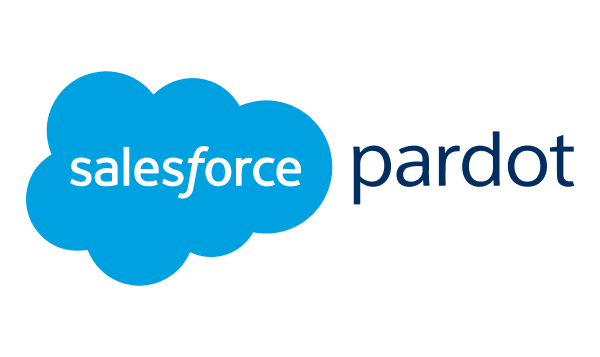- Premium features included
- No hidden costs or usage limits
- Scale from startup to enterprise



Choosing between Marketo and Pardot feels like picking between two seasoned heavyweights in a boxing ring. Both have been around since 2006, both cost serious money, and both promise to transform your marketing. But here’s the thing — they’re built for completely different fights.
Marketo is the Swiss Army knife of marketing automation. Complex, powerful, and intimidating if you don’t know what you’re doing. Pardot (now called Salesforce Marketing Cloud Account Engagement) is more like a really good wrench — simpler, focused, and perfect if you’re already working in the Salesforce garage.
The real question isn’t which one has more features. It’s which one your team will actually use without wanting to throw their laptop out the window.
Marketo
Pardot
Best For
Enterprise teams with marketing ops expertise
B2B companies married to Salesforce
Starting Price
~$895/month (but you’ll pay more)
$1,250/month
Learning Curve
Steep as a mountain
More like a hill
Setup Time
Months (seriously)
Weeks
CRM Integration
Plays nice with everyone
Salesforce or bust
Automation Power
Unlimited everything
Capped at 50-150 rules
Marketo
Pardot
Email Marketing
Advanced everything, but complex
Clean templates, simpler setup
Lead Scoring
All-in-one scoring system
Separate scores for behavior + demographics
Automation
Sky’s the limit
Hard limits that’ll frustrate you
Landing Pages
Total customization freedom
Basic, needs HTML skills
Reporting
Deep dive analytics
Simple reports tied to Salesforce
Integrations
Connects to everything
Salesforce. That’s it.
Multi-channel
Email, web, social, mobile
Mostly email with some extras
Think of Marketo as the platform for marketing teams who dream in flowcharts. You can build automation that would make a NASA engineer proud — multi-touch attribution, complex lead scoring, dynamic content that adapts based on 47 different variables.
But here’s what the sales demos don’t tell you: most companies spend their first year just trying to figure out how to send a decent welcome email. Marketo requires extensive training and setup, and unless you have someone who lives and breathes marketing automation, you’ll probably need to hire consultants.
The payoff? When it’s set up right, Marketo can run marketing campaigns that feel almost psychic in how well they predict what your prospects want.
Pardot is what happens when Salesforce decides to make marketing automation that actually makes sense. Some folks claim that Pardot can be learned in as little as a weekend (though a week is more realistic).
The magic is in how it talks to Salesforce. Your sales team sees everything — which emails prospects opened, what pages they visited, how engaged they really are. No more “the lead said they weren’t interested” when the data shows they’ve been stalking your pricing page for three weeks.
The downside? You’ll hit the ceiling faster than you’d like. Those automation limits aren’t just numbers on a pricing page — they’re real constraints that growing marketing teams bump into.
Marketo
Pardot
Entry Level
$895/month (barely functional)
$1,250/month (actually usable)
Mid-Tier
$1,795/month
$2,500/month
Enterprise
$3,195/month
$4,000/month
Contract
Locked in for a year
Month-to-month available
Hidden Costs
Professional services (lots)
Quick-start packages (optional)
Here’s the brutal truth about pricing: that entry-level Marketo plan is like buying a Ferrari without an engine. Marketo pricing can offer sticker shock to some prospective customers, and you’ll need the higher tiers to get features that actually matter.
Pardot’s pricing is more honest upfront. What you see is closer to what you’ll actually pay, especially if you’re already in the Salesforce ecosystem.
Marketo
Pardot
Free Trial
Demo calls only
Demo calls only
Free Plan
Doesn’t exist
Doesn’t exist
Reality Check
Both require serious commitment
Both require serious commitment
Neither platform offers a real free trial. Why? Because both Marketo and Pardot require extensive setup before you can start using or testing them effectively.
Want to actually test marketing automation without writing a check first? Sender.net gives you 15,000 free emails monthly with real automation features. Not a demo, not a trial — actually free.
Marketo
Pardot
Marketo is probably overkill for most businesses, but when you need its power, nothing else comes close. Marketo smart campaigns offer a wider breadth of options and functionalities than Pardot’s automation and segmentation rules.
The problem? Most marketing teams spend more time fighting with Marketo than using it. Users report that the platform’s range of core features are overly complicated, confusing and at times outright baffling.
It’s like buying a Formula 1 car for your daily commute. Impressive, but probably not practical.
Pardot wins on simplicity, but simplicity has its limits. The Einstein AI features are genuinely useful — predictive lead scoring that actually makes sense, and the separate scoring system (behavior) plus grading (demographics) gives you clearer insights than Marketo’s combined approach.
But those automation limits? They’re not suggestions. Pardot unfortunately has a limit to the number of Automation Rules that can be active in your instance, and you pay for those limits based on the tier.
Growing marketing teams outgrow Pardot faster than they’d like.
The numbers tell a story: Marketo has 2,110 reviews averaging 4.1 stars, while Pardot has 1,725 reviews averaging 3.9 stars. But dig deeper and you’ll see what really matters.
Marketo users love the power but hate the complexity. One admin who’d used multiple platforms said “Marketo is easy to use, quick to setup and an all around good medium level tool” — but then admitted it took over a year to fully deploy across their organization.
Pardot users appreciate the Salesforce integration but want more flexibility. “Pardot is great in that it has many connections to external services that give you better insights into your contact’s digital body language”, one reviewer noted.
Capterra reviews reveal the daily reality of using these platforms. Marketo users often mention needing dedicated specialists or external consultants. One user switching from Marketo to Pardot said “it is night and day…Marketo STILL looks like it was developed with Windows 95, steep learning curve, and prone to errors”.
Pardot users love the faster setup but bump into limitations as their marketing gets more sophisticated.
Trust scores reflect something interesting: both platforms work, but they work for different types of companies. Enterprise reviews for Marketo tend to be more positive than SMB reviews. Makes sense — enterprises have the resources to implement it properly.
Pardot reviews consistently mention the Salesforce integration as the deciding factor. If you’re not using Salesforce, most reviewers suggest looking elsewhere.
Reddit discussions cut through the marketing speak. The consensus? Marketo takes the win over Pardot when it comes to power and scalability, but customers complain that Pardot is missing some advanced automation features.
One thread summed it up perfectly: “Marketo if you have the team and budget. Pardot if you’re married to Salesforce. Something simpler if you just want marketing automation that works.”
Choose Marketo if you’re a large company with dedicated marketing ops people and complex, multi-channel campaigns that justify the investment. You’ll need patience, budget, and expertise.
Choose Pardot if you’re already using Salesforce and want marketing automation that doesn’t require a PhD to operate. Just know you’ll eventually hit its limits.
Consider Sender if you want marketing automation that actually works without the enterprise headaches. 15,000 free emails monthly, real automation features, and pricing that won’t require board approval.
The dirty secret about marketing automation? The global marketing automation software market is projected to grow from $7.23 billion in 2025 to $16.81 billion by 2032, but most companies use maybe 20% of their platform’s capabilities.
Sometimes the best tool is the one your team will actually use.
